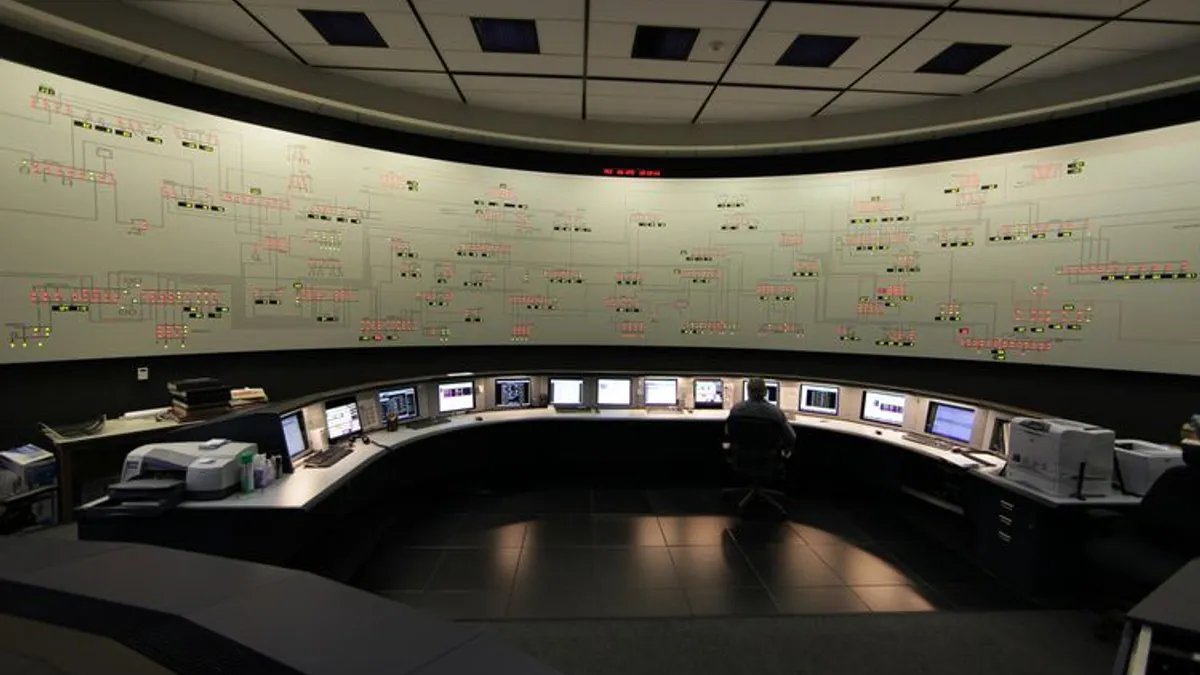We know the pending wave of coal plant retirements is one of the most concerning challenges facing utilities, right? Utilities see distributed generation as a major threat with little room for business opportunities – yes? Cyberattacks are one of the most pressing issues keeping utility execs up at night? But of course.
Well, not so fast. Utility Dive's first annual State of the Electric Utility report, released today, provides a detailed look at how more than 500 utility professionals view the major issues facing their utilities. Some of the findings contradict conventional wisdom.
Here are a just few of the report's highlights. You can download the full report here.
What doesn't keep utility execs up at night
One of the most surprising results from the survey are the issues that utility professionals are least worried about.
The list includes hot button topics like coal plant retirements, renewable mandates, and air emission standards. All of those issues entail major change to power supply portfolios and have price tags in the millions and billions.
So why aren't these issues raising bigger concerns for utility professionals? We think it's because figuring out how to provide power has been a central utility job since they were first developed more than a century ago. It's what utilities do and they've been preparing for these changes for the last few years.
An issue frequently in the headlines – cybersecurity – was actually the least pressing challenge utilities face, according to the report. Just 11% of those surveyed listed it as even just one of the top three challenges utilities are dealing with.
So then what are the big issues according to utilities?
The biggest challenge facing utilities: Old age
Two of the biggest issues facing utilities are long-in-the-tooth infrastructure and an aging workforce, according to utility professionals.
There are scores of power plants, thousands of miles of power lines and hundreds of substations that are more than 50 years old. With age they're becoming less efficient and breaking more. At the same time, the utility work force is getting older (or perhaps more mature and wiser) as a group. A wave of retirements looms.
With this challenge comes opportunity: replacing old infrastructure with newer, more efficient and in some cases “smarter” technology. Dealing with these new opportunities should be appealing for young, savvy job seekers.
Distributed generation: Threat or opportunity?
Most utility professionals consider distributed generation to be the number one threat to utility business models. This is no surprise. Arizona Public Service, for example, last fall campaigned, with TV ads, in an effort to get fees for solar rooftop owners. The issue was widely discussed at the winter meeting of state regulators.
The real surprise is that a significant majority – 57% – believe utilities should take a direct role in supplying distributed generation to their customers, either through owning and leasing distributed assets or by partnering with established distributed generation companies.
Any optimism for demand growth?
Around 2008, electric sales nose dived. At the time, most people thought sales would return to their pre-recession levels once the economy got going again. Officially, the recession ended in June 2009.
For several years after that, utility officials said a return to historic sales levels was just around the corner. For most, it never happened. Various theories were floated on what was keeping sales down: energy efficiency, appliance standards, poor housing sales and flat median incomes.
Whatever the exact cause, about a quarter of the Utility Dive survey respondents said they expected sales to be flat or to fall over the next five years. Only 21% thought their utilities would see “significant” growth.
Sales growth levels are crucial for several reasons. From a practical point of view, growth leads to more infrastructure investments. It also reduces rate increases. Remember the aging infrastructure, retiring power plants and emissions projects? Rates are going up.
And higher rates make rooftop solar more appealing, which in turn lowers sales, which makes people talk about death spirals. Regulators may want to increase retail competition to see if that will keep electric prices down for consumers.
Energy efficiency, demand response on the rise
Related to expectations for generally tepid electric sales, a wide majority of utility professionals expect their utilities will offer more efficiency and demand response programs.
This is no surprise as federal and state regulators having been approving policies and standards to encourage efficiency and demand response. Increasingly, states are providing incentives for efficiency programs. Some states like California have decoupled electric sales from utility revenue so utilities will be indifferent to how much electricity they sell. We expect to see policies around efficiency and demand response to continue to evolve.
If you want to read the full results with more analysis, you can download the survey report here.





















